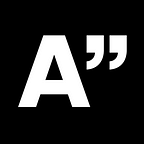Documentary photography in the time of flooding
Documentary photography is about trying to understand the multiplicity of the world we live in and trying to convey it in works of art that will again challenge us to try harder.
Documentary photography in the time of flooding
Flooding understood in three ways: flooding as in rising waters and a climate emergency. Flooding as in a flood of images on our screens. And flooding as in a flood of previously unheard voices, amplifying, spreading and intertwining.
In the context of documentary photography this triple flooding means:
Trying to address a topic that arches over everything but defies definition and concretisation and remains invisible to us, even now.
Trying to operate professionally and ethically in a world where ready access to smartphones is said to have democratised photography and where the status of photographs as historical evidence has been discredited as a result.
And, in the context of working in the merging fields of journalism, documentary making, and contemporary art, it means trying to see the other, be it a human or nonhuman other — to really see them, listen to their voices, and give time and space to them, work with them, instead of just “covering” them.
Documentary photography is an idealistic pursuit. It was originally employed as a tool for promoting social change. Yet the history of documentary photography is full of examples of privileged people travelling across the globe, shooting images of other not-so-privileged people, failing to ask them for their names, using their faces and stories for whatever purposes they deem relevant and then getting paid, or becoming famous even, for doing so. During my student days, there was little discussion about the many ways in which documentary photography constitutes an exercise of power over others. Instead, we focused on the photographer as auteur, our guide to and interpreter of current events, and we studied the Great Photographs, iconic, formally perfect crystallisations of all the things that really matter.
The previous paragraph is, of course, an exaggeration, a compressed statement. I left it there as an example of how useless statement making is nowadays. Nothing is black and white anymore. You can refute my argument, and so can everyone else. Of course, more empathic ways of working have always existed, and you can find evidence of them in the canon, though more will exist outside it.
However, I think it may be that we have left the discourse of statement making behind and entered an era of trying. Trying means more variety in our work processes and our forms of representation. It means a shift in photography’s epistemic core: how we get to know what we know, and how we show that knowledge.
What does trying look like in the context of a university classroom?
We need to declare our position and think carefully about why and how we approach others. What are our motivations for making images? Whose story do we want to tell and who narrates it? And as we arrive at the point where everything seems impossible and we say to ourselves “so what you’re saying is that we can’t take pictures of anything but ourselves?”, we then need to get over that and try to find ways of justifying our work.
We set about trying different techniques and methods, we turn it into a performance with a script, we interview people, we let algae or an algorithm do part of the work, we look into archives, we let errors happen. And what we’re then left with is an end result that might well show the whole process, reveal the trying. Thus, a contemporary documentary essay, in contrast with the traditional idea of a series of finalised images forming a narrative, may contain many chapters with different types of photographs: journalistic action shots, staged pictures, moving images, self-portraits, taken by one or more photographers. It may comprise a variety of materials and techniques, damaged images, found images and objects, documents, album pictures, archival images, different types of texts: diary entries, process descriptions, letters, WhatsApp exchanges, transcripts, captions, and _____________ (insert your own ideas here).
The contemporary documentary essay is about trying, or essayer as the French have it. The same is happening in other arts too, and the fields are merging.
It’s about trying to understand the multiplicity of the world we live in and trying to convey it in works of art that will again challenge us to try harder.
Pointing your smartphone at something, pressing the button, and then posting what you’ve caught all over the internet is not all there is to photography. Actually, I think photography is not democratised at all, not yet. We’re just getting started. To stay afloat, we will need a deep understanding of the historical, fluctuating power structures that shape photography as a technology and as a medium.
And we need to try and try again.
Hanna Weselius
Hanna Weselius (Ph.D.) is a lecturer of Photography at Aalto University and a writer.
